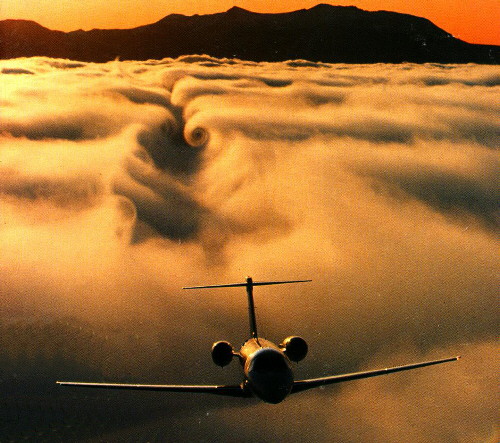Aircraft slip stream
Thread Starter
Join Date: Jul 2006
Location: Chigwell, Essex
Age: 48
Posts: 62
Likes: 0
Received 0 Likes
on
0 Posts
Aircraft slip stream
Hi all,
I would like to ask about a phenomenon I haev noticed while watching aircraft come into land at Heathrow and other smaller airports.
As an aircraft passes over at about 50 - 60 feet overhead, count to 30 and then there is a strange "ripping of paper" kind of sound in the air. It's very odd and it appears to follow the aircraft. First time I heard it I went
I can only put this down to aircraft slip stream or is it something else?
Any help would be most appreciated!
I would like to ask about a phenomenon I haev noticed while watching aircraft come into land at Heathrow and other smaller airports.
As an aircraft passes over at about 50 - 60 feet overhead, count to 30 and then there is a strange "ripping of paper" kind of sound in the air. It's very odd and it appears to follow the aircraft. First time I heard it I went

I can only put this down to aircraft slip stream or is it something else?
Any help would be most appreciated!
Originally Posted by paulkinm
Hi all,
I would like to ask about a phenomenon I haev noticed while watching aircraft come into land at Heathrow and other smaller airports.
As an aircraft passes over at about 50 - 60 feet overhead, count to 30 and then there is a strange "ripping of paper" kind of sound in the air. It's very odd and it appears to follow the aircraft. First time I heard it I went
I can only put this down to aircraft slip stream or is it something else?
Any help would be most appreciated!
I would like to ask about a phenomenon I haev noticed while watching aircraft come into land at Heathrow and other smaller airports.
As an aircraft passes over at about 50 - 60 feet overhead, count to 30 and then there is a strange "ripping of paper" kind of sound in the air. It's very odd and it appears to follow the aircraft. First time I heard it I went

I can only put this down to aircraft slip stream or is it something else?
Any help would be most appreciated!
 What you are hearing are the wingtip vorticies. These are super strong mini horizontal tornadoes formed around the wingtips. On a wet/humid day you can physically see them.
What you are hearing are the wingtip vorticies. These are super strong mini horizontal tornadoes formed around the wingtips. On a wet/humid day you can physically see them.There is high pressure under the wings and low pressure on the top surface. This high pressure at the tips effectively leaks around the wingtip edge to the low pressure area and in doing so, creates these spiralling tip vorticies.
They do descend once they are formed, hence why you hear them 30 sec later.
On a very clear still night with low ambient noise, I've heard them several minutes later after aircraft have flown overhead on approach from 2000+ feet up.
From a pilot perspective, if you have a small aircraft, they can literally spin/flip you out of control and there are regulations which state minimum times that smaller aircraft have to wait before following a larger one. It's called a "wake turbulence category".....light/medium/heavy. A bit like a boat plowing thru the water.
Hope this explains your mystery noises!
Thread Starter
Join Date: Jul 2006
Location: Chigwell, Essex
Age: 48
Posts: 62
Likes: 0
Received 0 Likes
on
0 Posts
Cheers for that TrueBlu. Yeah! I was going to get in the car and head into the hill's  The noise is cool!
The noise is cool!
Is it really that dangerous for lighter aircraft to get caught up in one of these vortexes? I could imagine that if they are powerful enough to make these really load ripping noises, then why not!?!
Thanks for your help!
 The noise is cool!
The noise is cool! Is it really that dangerous for lighter aircraft to get caught up in one of these vortexes? I could imagine that if they are powerful enough to make these really load ripping noises, then why not!?!

Thanks for your help!
Originally Posted by paulkinm
Is it really that dangerous for lighter aircraft to get caught up in one of these vortexes?
A Cessna 150 flying right behind a 747 in it's approach configuration could have tragic consequences! The pilot would instantly become a passenger in his own aircraft. They can last for around 3 minutes from a heavy aircraft and extend several miles behind.
The REAL danger is a light aircraft LANDING right behind a heavy one. Within a second you could be flipped upside down and pointing at the ground with no room to recover. There have been plenty of fatal accidents caused from this!
The aircraft's vorticies are strongest just as it rotates on takeoff.
Cool vids:
http://www.dfrc.nasa.gov/Gallery/Mov...M-0073-01.html
http://www.airpower.maxwell.af.mil/a...rten_Fig_1.gif
Here's some cool pics that give a good visual appreciation of them.



Join Date: Feb 2005
Location: flyover country USA
Age: 82
Posts: 4,579
Likes: 0
Received 0 Likes
on
0 Posts
In Duane Cole's "To A Pilot" (early 60s) he describes following (IIRC) a DC-6 in a PA-24. He was rolled inverted at low altitude, and he recovered by continuing to roll the same direction. 

Originally Posted by paulkinm
Do the use of winglets improve the wake or is it minimal? (if any)

Originally Posted by paulkinm
Do the use of winglets improve the wake or is it minimal? (if any)

Basically, the BIG wingtip vortex is broken down into 2 smaller ones. One at the root of the winglet and the other at the tip of the winglet. So they're still there, but there is plenty of strong wake or disturbed air from all along the wing.




